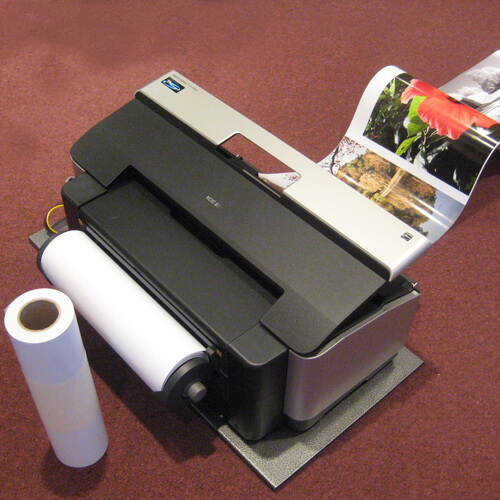How To Print Panoramic Inkjet Prints
The Creation of Panoramics - Article by Cliff Carter

First, a suggestion for the taking stage of images to be used for panoramas. I have found it is a good practice to use manual exposure on the camera, digital or film and also manual focus, if you have the choice and to scan from left to right to make sure you set an exposure that will give detail in the brightest and darkest sections of the total image. Pick a part of the scene to use as the level and follow this from frame to frame as you pan across the scene.
A tripod is useful for this but I nearly always manage with a monopod and have successfully hand held on occasions, practice helps. If there is a zoom lens on the camera make sure that the setting doesn’t change between shots, reason for this is pretty obvious but easy to overlook. This is an area where digital capture is very beneficial as you can take many sequences of images for panoramic photography prints and then only use the ones that look best when you preview them on the computer.
With film you may not even take the images in the first place because of the cost of processing. If you open the images in Photoshop or Elements, line them up along the lower part of the screen, reduce their screen image size by holding down the control key and dabbing on the minus key on the top line of the keyboard. You can also click on the left hand symbol under Navigator, watch the percentage readout and keep all the images at the same reading as this will give a good indication of how they match up.
Select the first image and click on Image on the top menu bar, from the drop down menu click resize and make a note of the dimension in the box. Work out the size needed for your new image from this and then click on New from the File menu at the top, you can also hold down the control key and tap “N” and in the box that is opened you can click on preset sizes, select “Custom” and then type in the desired dimensions and resolution.
The following screengrabs should give some idea of the sequences. Use the move tool to select each image and drag it onto the Untitled New Canvas, you can then move all the images with this tool until you are happy with their alignment. Fine tune their positions using the up/down and left/right arrows on the keyboard. Once the images have been moved onto the new canvas, close the originals lined up along the bottom without saving any changes.
This will free up your RAM and allow the computer to work faster. Select an overlaying layer and erase the edge with a large soft brush as necessary, it usually takes a little practice to pick the best effect but you can always use the History palette to undo or just check to see what you have done.
If one of the layers needs to have the exposure, colour balance, contrast, etc changed use the appropriate palette to make the adjustment. All the open images should now appear to blend together. Crop to the final size and save the layered image as a PSD file and then as a JPEG copy when you are satisfied with the result. Close and save the PSD file as your main backup and working file.#
Next open the JPEG file, which will have all the images joined as a single layer and use Levels, Hue and Saturation or whatever tools are suitable to fine tune the exposure, colour balance, etc and finish with unsharp mask should you think it is needed. When you get the hang of the routine you can use the adjustment layers feature at the bottom of the layers palette, the advantage with this is that any changes you make in Levels for example can be modified at any time in the future without damaging your original image. Perhaps more of this another time! For more articles like this and oth panoramic photography tips please visit Cliff’s website: www.cliffccd.com